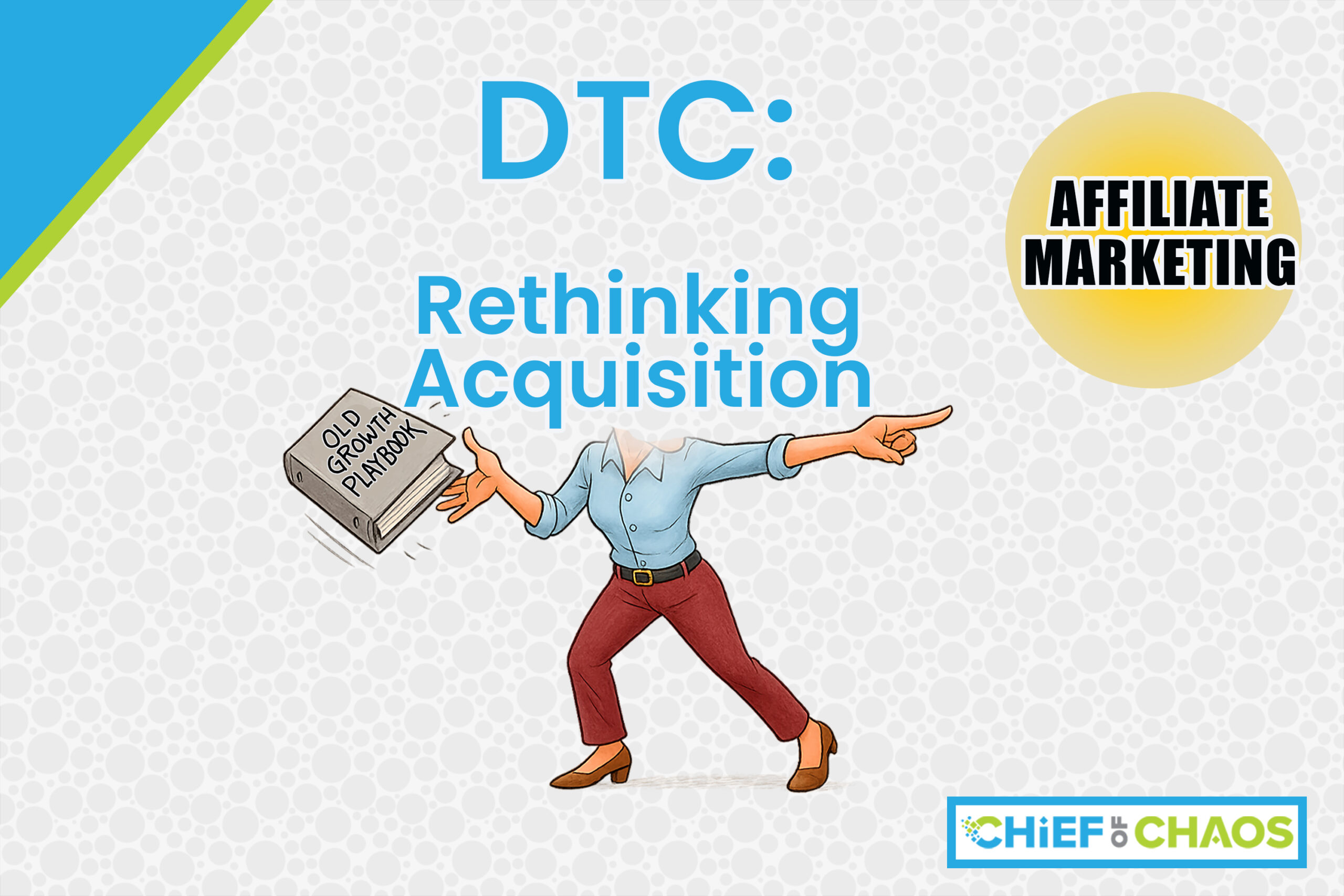iOS changes wrecked your CAC. Your ROAS is toast. VC money is drying up.
If you’re still scaling your direct-to-consumer (DTC) brand on the old growth playbook—paid social, deep discounts, and LTV projections—you’re not just stuck.
You’re bleeding margin.
The Growth-At-All-Costs Era Is Over
For years, DTC brands thrived by flooding Facebook and Instagram with ads, acquiring customers fast, and delaying profitability in favor of top-line revenue. This worked when:
- Customer acquisition costs (CAC) were low
- Attribution was reliable
- VC funding was abundant (thanks, ZIRP)
- iOS data was flowing freely
But the rules have changed:
- iOS 14.5+ privacy changes have made targeting harder and attribution murky.
- Paid CACs have skyrocketed—many brands are now paying more to acquire a customer than they ever get back.
- Blended ROAS is shrinking, even with heavy discounting.
- Venture capital has dried up, and investors now demand margin, not just growth.
As a result, many DTC businesses are in crisis—burning cash with no sustainable path to profit.
The Warning Signs: Are You Still Playing by the Old Rules?
If any of these sound familiar, it’s time to rethink your acquisition model:
- You’re spending 5–6 figures a month on Meta ads with sub-1.5x ROAS
- You’re offering steeper discounts just to maintain conversion volume
- Your LTV projections aren’t materializing fast enough to offset rising CAC
- You’re overly reliant on a single channel for acquisition
The traditional paid media playbook is not only outdated—it’s dangerous. And continuing to scale on broken metrics means you’re compounding losses, not growth.
What’s Replacing the Old Playbook?
In this new environment, DTC brands need:
- Channels that scale profitably
- Acquisition you only pay for when it works
- Diversification beyond Facebook and Google
- Clarity on what’s actually driving revenue
This is where affiliate marketing becomes a game-changer.
Why Affiliate Marketing Solves Today’s Acquisition Problems
Affiliate marketing is performance-based customer acquisition. Instead of paying upfront for ads, you pay partners a commission only after they generate a sale or lead.
It solves the exact problems DTC brands are facing:
| Challenge | Affiliate Solution |
| Rising CAC | You set your own commission, keeping CAC predictable and margin-positive |
| Attribution chaos | Transparent tracking and pay-per-conversion clarity |
| Upfront spend risk | No budget wasted—payouts happen post-conversion |
| Lack of diversification | Access to influencers, publishers, creators, niche communities |
| Cash flow pressure | Zero media pre-spend; commission only when revenue comes in |
For cash-strapped brands, affiliate is a growth channel with built-in guardrails.
Affiliate Is the Most Underutilized Growth Lever in DTC
So why aren’t more brands using it?
Because it’s misunderstood.
Modern affiliate programs go far beyond coupon sites and last-click attribution. Today’s programs involve:
- Long-tail content creators
- High-intent product reviewers
- B2B partnerships and media publishers
- Influencer marketing—on a performance model
And when done right, affiliate can drive 20–30% of your total revenue, at a fraction of the CAC of paid social.
What’s Next in the Series?
In Part 2, we’ll unpack exactly how the pay-for-performance model works, and why it’s one of the most cost-efficient growth marketing strategies in 2025.
Ready to Rethink Your Acquisition Strategy?
If you’re serious about turning your affiliate program into a revenue engine—or launching one that doesn’t leak margin—Chief of Chaos offers free affiliate audits and strategy calls.
Book your audit here
Let’s fix your funnel before your runway disappears.

